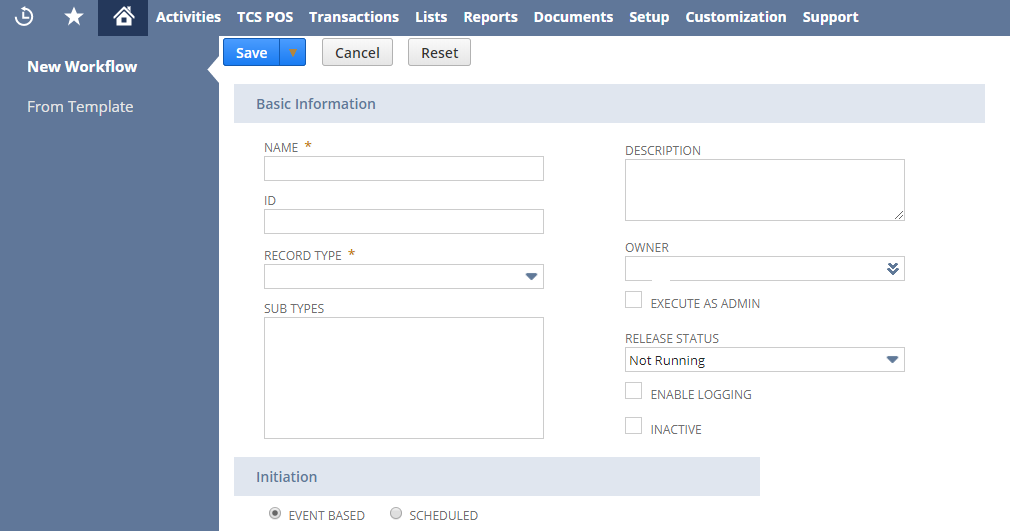SuiteFlow can automate your custom approval routing, apply validations, send emails, create related records, direct the end user to appropriate forms in the user interface, and more. NetSuite Workflow Builder is a powerful tool that allows a user to automate processes and enforce company business rules without having to write extensive SuiteScript code.
How to Start a NetSuite Workflow
You can find NetSuite workflows under Customization => Workflows. NetSuite includes the following 3 workflow templates:
- Journal Entry Basic Approval
- Purchase Order Basic Approval
- Sales Order Basic Approval
There are following things, you need to work around as:
- Workflow Context
- Record types and subrecords for creation of a workflow
- Event versus scheduled workflows
- Trigger types
- Event types
- Context types
- Building conditions using the visual builder or linking a saved search as criteria
When you create a workflow, you specify the basic workflow properties, event initiation, and workflow initiation properties. In the below screen, you can see the basic workflow properties:

Workflow States– These are the building blocks of workflows. A state corresponds to a stage or step in a business process. States include specific actions, and are connected to other states by transitions.
Workflow Transitions– Transitions allow for movement between states (steps) of your business process. You can define conditions and trigger condition options for the most accurate process possible.
Workflow Actions– Create actions that will allow a state (steps) to execute a command. For example: send an email, add a button, remove a button, set a field value, go to record, return user error.
Workflow Fields– Fields work similar to other fields you would add to a record, although they live within the workflow. You can add NetSuite fields to the entire workflow or just to a particular state.
Things to Know about NetSuite Workflows
Workflows are working around a record. Each record will have its own workflow that you can track for progress, and review the log.
Sublists are not available in a workflow. You can only manipulate and touch body fields of a record. However, there are some ways of using saved searches, which you can set up as a condition of a workflow state or transition. The saved search functionality can use the sublist values to define criteria for your business process.


Leave a Reply